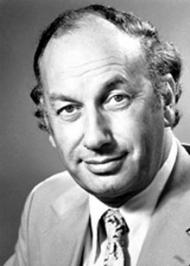Augusta Savage, born
Augusta Christine Fells (February 29, 1892 – March 26, 1962) was an African-American sculptor associated with the Harlem Renaissance. She was also a teacher and her studio was important to the careers of a rising generation of artists who would become nationally known. She worked for equal rights for African Americans in the arts.
Early life and workAugusta Fells (Savage) was born in Green Cove Springs (near Jacksonville), Florida. She began making clay figures as a child, mostly small animals, but her father would beat her when he found her sculptures. This was because at that time, he believed her sculpture to be a sinful practice, based upon his interpretation of the "graven images" portion of the Bible. After the family moved to West Palm Beach, she sculpted a Virgin Mary figure, and, upon seeing it, her father changed his mind, regretting his past actions. The principal of her new school recognized and encouraged her talent, and paid her one dollar a day to teach modeling during her senior year. This began a lifelong commitment to teaching as well as to art.
In 1907, she married John Moore; they had a daughter, Irene. John died shortly after. Fells moved back in with her parents, who raised Irene with her. Fells continued to model clay, and applied for a booth at the Palm Beach county fair: the initially apprehensive fair officials ended up awarding her a $25 prize, and the sales of her art totaled 175 dollars; a significant sum at that time and place.
That success encouraged her to apply to Cooper Union (Art School) in New York City, where she was admitted in October, 1921. During this time she married James Savage; they divorced after a few months, but she kept the name of Savage. She excelled in her art classes at Cooper, and was accelerated through foundation classes. Her talent and ability so impressed the staff and faculty at Cooper, that she was awarded funds for room and board, tuition being already covered for all Cooper students.
In 1923 Savage applied for a summer art program sponsored by the French government; despite being more than qualified, she was turned down by the international judging committee, solely because she was black (Bearden & Henderson, AHOAAA, p. 169-170). Savage was deeply upset, and questioned the committee, beginning the first of many public fights for equal rights in her life. The incident got press coverage on both sides of the Atlantic, and eventually the sole supportive committee member, sculptor Hermon Atkins MacNeil—who at one time had shared a studio with Henry Ossawa Tanner—invited her to study with him. She later cited him as one of her teachers. After completing studies at Cooper Union, Savage worked in Manhattan steam laundries to support herself and her family. Her father had been paralyzed by a stroke, and the family's home destroyed by a hurricane. Her family from Florida moved into her small West 137th Street apartment. During this time she obtained her first commission, for a bust of W. E. B. Du Bois for the Harlem Library. Her outstanding sculpture brought more commissions, including one for a bust of Marcus Garvey.
In 1923 Savage married Robert Lincoln Poston, a protégé of Garvey. Poston died of pneumonia aboard a ship while returning from Liberia as part of a Universal Negro Improvement Association and African Communities League delegation in 1924.
In 1925 Savage won a scholarship to the Royal Academy of Fine Arts in Rome; the scholarship covered only tuition, however, and she was not able to raise money for travel and living expenses. Thus she was unable to attend.
Knowledge of Savage's talent and struggles became widespread in the African-American community; fund-raising parties were held in Harlem and Greenwich Village, and African-American women's groups and teachers from Florida A&M all sent her money for studies abroad. In 1929, with assistance as well from the Julius Rosenwald Fund, Savage enrolled and attended the Académie de la Grande Chaumière, a leading Paris art school. In Paris, she studied with the sculptor Charles Despiau. She exhibited and won awards in two Salons and one Exposition. She toured France, Belgium, and Germany, researching sculpture in cathedrals and museums.

